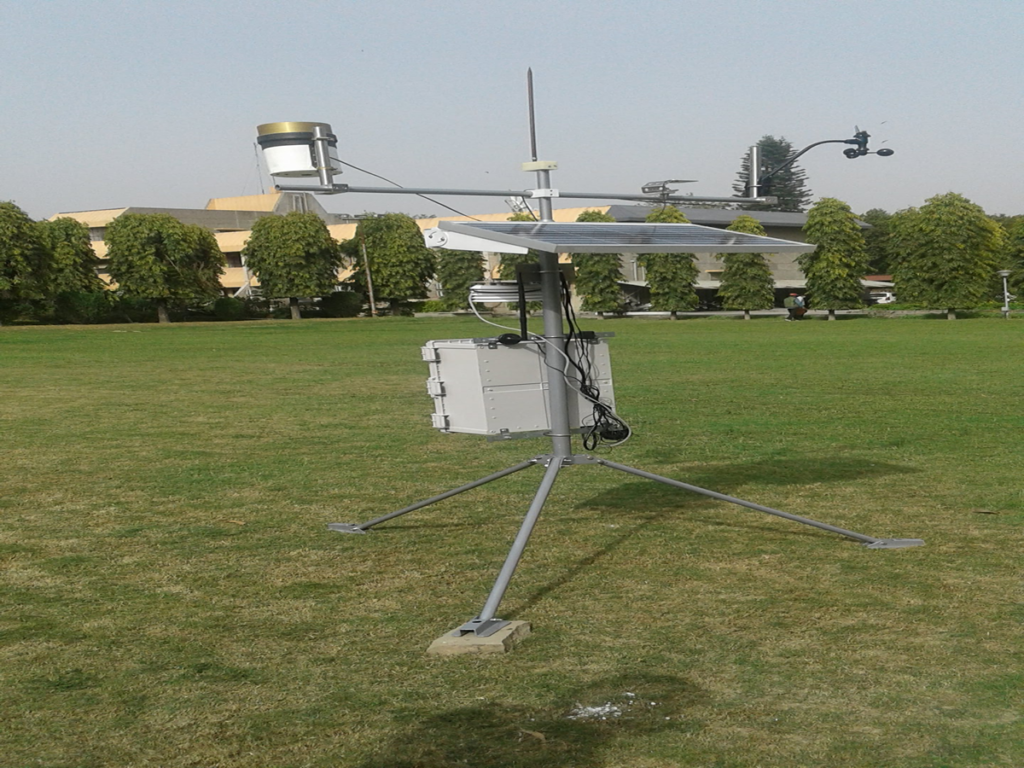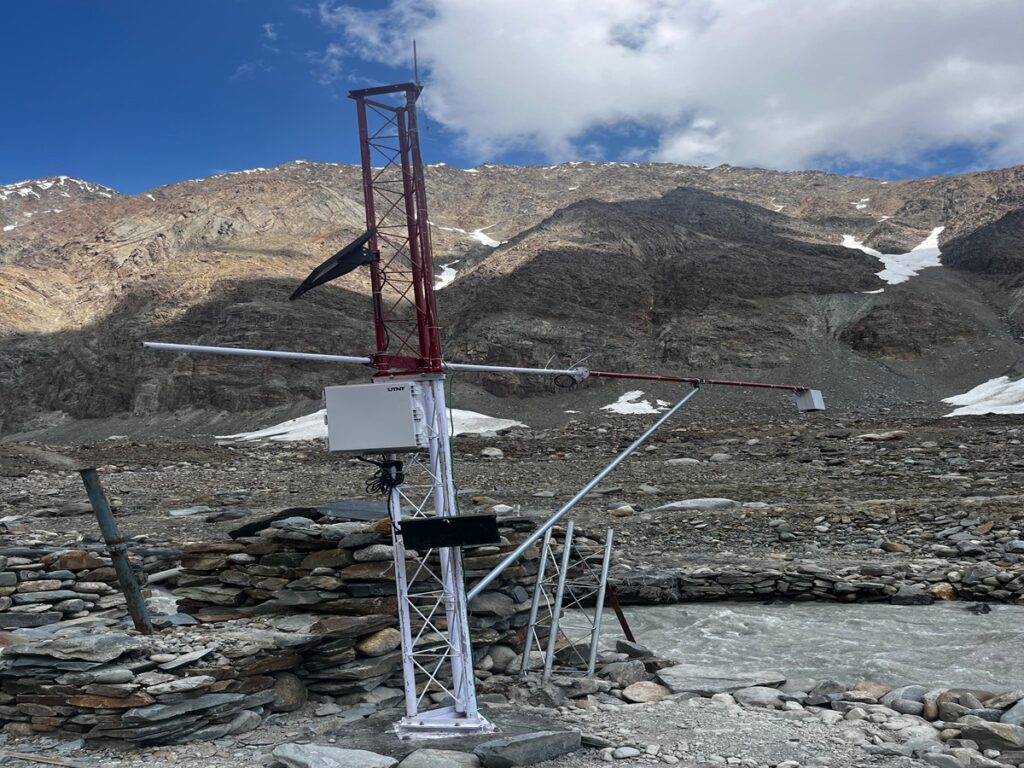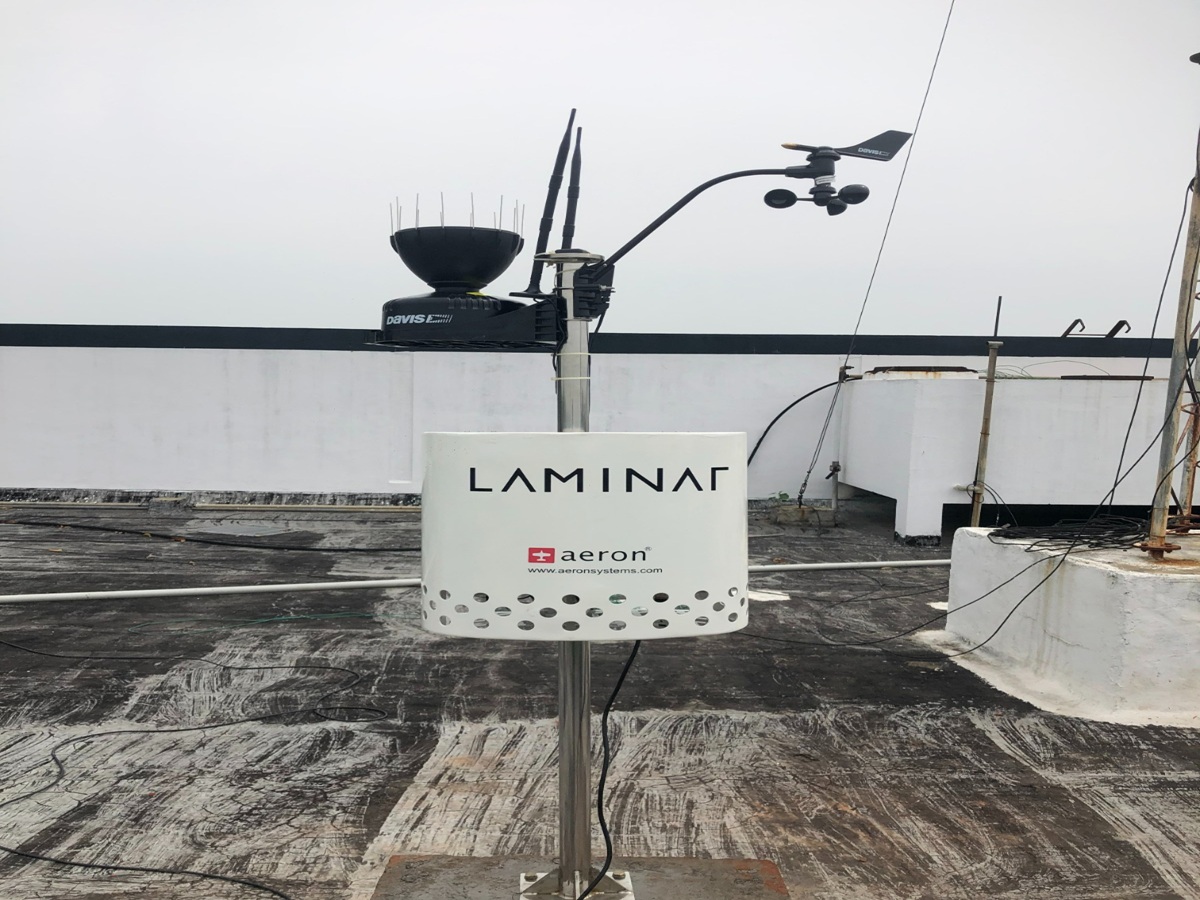Everything on the planet is part of the Nature. We humans are also creations of Nature only. In most of our activities, the environment has had a major role in the do-abilities of the tasks, be it agriculture, power generation, production, or anything for that purpose even human and animal behavior is also very much connected to the environment.
UTNT, with its rich experience in measurement and monitoring solutions, offers a variety of products for various applications that need real-time monitoring, IoT solutions for remote data access, alerts, and control.
Automatic Weather Stations
An Automatic Weather Station (AWS) is a sophisticated system designed to collect and record various atmospheric parameters without human intervention. These stations are equipped with a range of sensors that measure key weather elements like temperature, humidity, wind speed and direction, barometric pressure, and precipitation. Data is transmitted in real-time or at specified intervals to a central system for analysis and forecasting.


Glaciers-AWS, Steam Drill, FSP
Glaciers play a critical role in regulating global climate, water cycles, and ecosystems. Monitoring glaciers is essential to understanding their behavior, movement, and the impacts of climate change. Advanced technologies like Automatic Weather Stations (AWS), Steam Drills, and Field Site Profiling (FSP) are used to collect data and provide insights into glacier dynamics. These technologies help in monitoring temperature, snowfall, ice flow, and other critical parameters essential for glacier research and conservation.
Indoor/Outdoor Air Quality
Air quality has become a pressing concern worldwide, with rising pollution levels impacting both urban and rural areas. Our cutting-edge Air Quality Monitoring System is designed to provide real-time, accurate insights into our air, helping individuals, businesses, and governments make informed decisions to safeguard public health.

Why Environment Monitoring?
Environmental monitoring is essential for safeguarding natural resources and ensuring sustainable development. It provides critical data that enables early detection of environmental hazards, supports regulatory compliance, and informs strategies to minimize ecological footprints. By monitoring air, water, soil, and noise levels, these systems help address global challenges such as climate change, resource depletion, and pollution. Industries, governments, and organizations rely on environmental monitoring to meet sustainability goals and promote public health and safety.
Key Parameters
- Air Quality: Monitoring pollutants such as particulate matter (PM2.5, PM10), carbon dioxide (CO2), sulfur dioxide (SO2), nitrogen oxides (NOx), and volatile organic compounds (VOCs).
- Water Quality: Assessing parameters like pH, turbidity, dissolved oxygen, conductivity, and contaminant levels such as heavy metals and nitrates.
- Soil Health: Measuring moisture levels, nutrient composition, and contamination to ensure sustainable agricultural practices.
- Noise Pollution: Monitoring decibel levels in industrial, urban, and residential areas to mitigate noise pollution.
- Weather Conditions: Tracking temperature, humidity, wind speed, and precipitation for environmental and climate analysis.
- Biodiversity Indicators: Observing changes in species populations and ecosystems to assess environmental health.
Key Features
- Real-Time Data Collection: Sensors provide instantaneous measurements of environmental parameters.
- IoT Integration: Systems incorporate IoT devices for remote monitoring and seamless data access.
- Wide Deployment Options: Solutions support fixed, portable, and drone-based deployments.
- Automated Alerts: Configurable thresholds trigger alerts for rapid response to environmental changes.
- Data Visualization: User-friendly dashboards and reports enhance data interpretation.
- Energy-Efficient Devices: Low-power systems ensure sustainable operation in remote or off-grid locations.
- Cloud Connectivity: Secure cloud platforms enable long-term data storage and trend analysis.
- Compliance Reporting: Automated reports streamline adherence to local and international environmental regulations.
- Robust Design: Devices are built to withstand harsh environmental conditions for reliable performance.
- Scalability: Modular systems allow for expansion to accommodate evolving monitoring needs.
Benefits
- Enhanced Decision-Making: Real-time insights empower proactive environmental management.
- Regulatory Compliance: Solutions facilitate adherence to environmental standards and reporting requirements.
- Public Health Protection: Monitoring ensures air and water quality, minimizing risks to human health.
- Sustainability Goals: Data-driven insights help organizations achieve sustainability targets and reduce their ecological footprint.
- Disaster Mitigation: Early warnings of environmental hazards enable timely interventions to minimize damage.
- Resource Optimization: Monitoring ensures efficient utilization of natural resources, reducing waste and costs.
- Improved Ecosystem Health: Continuous tracking supports the preservation and restoration of biodiversity.
- Community Engagement: Public access to environmental data promotes transparency and awareness.
- Cost-Effective Operations: Automation reduces the need for manual data collection and analysis.
- Global Impact: Solutions contribute to addressing global challenges like climate change and pollution.
